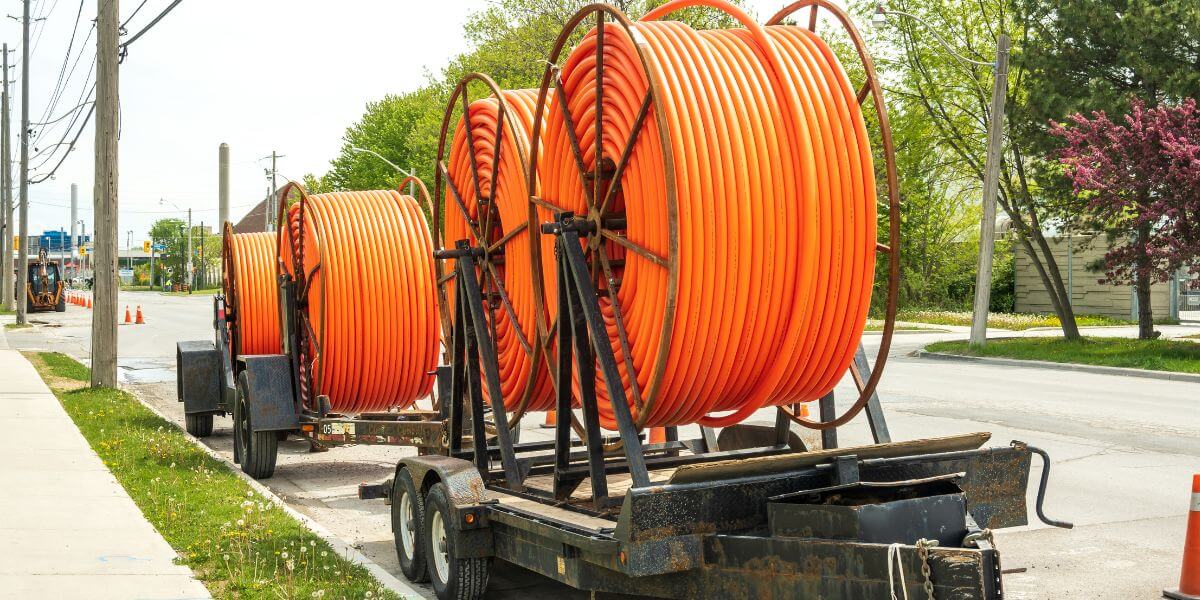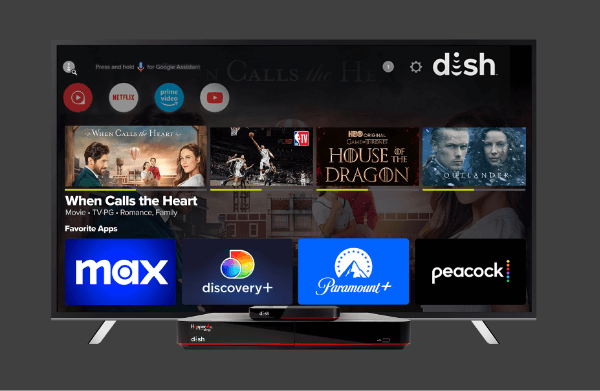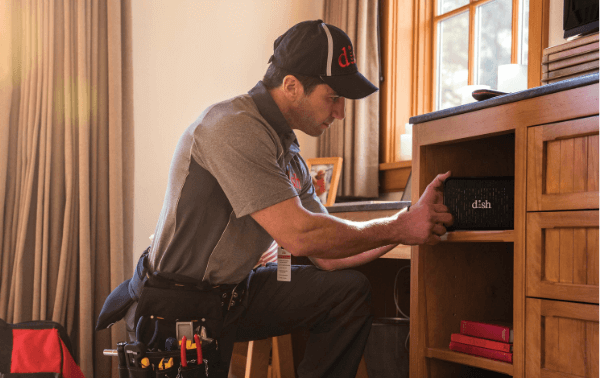Why Fiber Infrastructure is Necessary for Regional ISPs
Table of Contents
The demand for high-speed, reliable internet access continues to grow exponentially across America. As households, businesses, and schools increasingly rely on cloud computing, video streaming, remote work platforms, and smart technologies, regional Internet Service Providers (ISPs) face mounting pressure to deliver high-quality connectivity solutions, particularly in underserved and rural communities.
Traditional broadband technologies like DSL, cable, and fixed wireless often struggle to meet modern bandwidth requirements. This is where fiber infrastructure becomes not just beneficial but necessary for regional ISPs looking to remain competitive and meet their communities’ needs. By investing in fiber-optic networks, smaller and regional providers can deliver superior internet speeds, unmatched reliability, and future-proof scalability that legacy systems simply cannot match.
Understanding Fiber Infrastructure Technology
Fiber infrastructure consists of networks built with fiber-optic cables that transmit data using pulses of light rather than electrical signals used in traditional copper-based networks. These thin strands of glass or plastic enable data transmission at speeds approaching the speed of light with minimal signal degradation or interference. Several types of fiber deployments are relevant to regional ISPs:
- Fiber-to-the-Home (FTTH): Delivers fiber connectivity directly to residential properties, providing the highest possible speeds and reliability.
- Fiber-to-the-Premises (FTTP): Similar to FTTH but specifically designed for business locations and commercial buildings.
- Fiber-to-the-Curb (FTTC): Brings fiber close to end users but uses existing copper infrastructure for the final connection.
- Middle-Mile and Backbone Fiber: Long-haul fiber networks that connect communities, data centers, and regional networks.
For regional ISPs, implementing FTTH and FTTP solutions represents the gold standard, enabling them to offer gigabit-speed internet access while ensuring their infrastructure remains viable for decades to come [1].
Why Fiber Infrastructure is Essential for Regional ISPs’ Success

The importance of fiber
Here are a few reasons why fiber infrastructure is critical for regional ISPs’ success:
Unparalleled Speed and Capacity
Fiber networks deliver symmetrical speeds—equal upload and download capabilities—which has become increasingly important as remote work, telehealth, distance learning, and cloud applications dominate internet usage patterns. Regional ISPs that deploy fiber infrastructure can offer:
- Multi-gigabit speeds that support simultaneous high-bandwidth activities across multiple devices
- Lower latency, which is critical for applications requiring real-time response
- Consistent performance regardless of network congestion or peak usage times
- Support for bandwidth-intensive applications like 4K/8K video streaming, AR/VR experiences, and cloud gaming
This performance advantage allows regional ISPs to compete effectively against larger national providers and meet the evolving needs of their communities.
Superior Reliability and Resilience
Fiber infrastructure provides regional ISPs with a significantly more reliable network foundation compared to traditional broadband technologies.
Key reliability benefits include:
Fiber cables are immune to electromagnetic interference that plagues copper-based networks [2], resulting in cleaner signal transmission and fewer service disruptions. They’re also less susceptible to weather-related outages that frequently affect wireless solutions.
The physical durability of fiber cables means they require less maintenance and experience fewer breakages than copper alternatives. With properly installed fiber infrastructure, regional ISPs can dramatically reduce service calls and network downtime—leading to higher customer satisfaction and lower operational costs.
Perhaps most importantly, fiber networks maintain consistent performance over much greater distances than copper networks, allowing regional ISPs to extend their service areas without compromising quality.
Long-Term Investment and Future-Proofing
While the initial capital expenditure for fiber infrastructure deployment is higher than extending legacy networks, the long-term financial benefits make it the smarter investment for forward-thinking regional ISPs:
The physical infrastructure of fiber networks has an expected lifespan of 20-30+ years, compared to the more frequent replacement cycles required for copper-based networks [3]. Additionally, fiber’s virtually unlimited bandwidth capacity means regional ISPs can continually increase speeds through equipment upgrades without needing to replace the actual fiber cables.
As new technologies emerge and bandwidth demands continue to grow exponentially, fiber infrastructure provides regional ISPs with the foundation to adapt quickly and stay competitive. The same fiber lines installed today will be able to support technologies that haven’t even been invented yet.
Addressing Deployment Challenges for Regional ISPs
Financial Barriers and Funding Solutions
The high upfront costs of fiber deployment present significant challenges for regional ISPs, particularly when serving less densely populated areas. These costs include:
- Physical construction (trenching, aerial installation, conduit systems)
- Equipment (fiber cables, splicing hardware, network electronics)
- Permitting, easements, and regulatory compliance
- Engineering and labor expenses
However, several funding mechanisms help make fiber infrastructure more accessible for regional ISPs:
Federal programs like the USDA’s ReConnect Program [4] and the FCC’s Rural Digital Opportunity Fund [5] provide billions in subsidies specifically targeted at rural broadband expansion. State and local broadband initiatives often offer matching grants or low-interest financing for infrastructure projects. Public-private partnerships with municipalities or cooperatives can share costs and risks while accelerating deployment.
By strategically leveraging these funding opportunities, regional ISPs can overcome financial barriers to fiber deployment and create economically viable expansion plans.
Geographic and Logistical Considerations
Rural and challenging terrains present unique deployment obstacles for regional ISPs pursuing fiber infrastructure projects. Addressing these challenges requires careful planning and specialized approaches:
Regional ISPs must conduct thorough feasibility studies that account for population density, geographic obstacles, existing infrastructure, and potential subscriber rates. Advanced mapping tools and demand aggregation strategies help identify the most promising deployment areas to maximize return on investment.
Alternative deployment methods like microtrenching [6], aerial installations on existing utility poles, and strategic use of fixed wireless for last-mile connections in ultra-rural areas can reduce costs while maintaining service quality. Regional ISPs often find that a phased deployment approach—starting with higher-density areas and gradually expanding outward—offers the most sustainable path to comprehensive fiber coverage.
Competitive Advantages for Regional ISPs with Fiber Infrastructure

What drives fiber installations?
Fiber infrastructure is considered the gold standard in terms of internet connectivity, thanks to its unmatched speed and reliability. This makes it an attractive option for regional ISPs looking to compete with larger telecommunication companies, along with other advantages.
Community-Focused Service and Local Expertise
Unlike national providers, regional ISPs often maintain deep ties to the communities they serve. When combined with fiber infrastructure, this local focus creates powerful competitive advantages:
Regional ISPs understand the unique needs of their service areas and can customize their fiber offerings accordingly. Their local presence enables faster response times for installations, service calls, and technical support. Community relationships also foster greater customer loyalty and word-of-mouth marketing that larger providers struggle to match.
By leveraging these inherent advantages alongside superior fiber technology, regional ISPs can build thriving businesses even in markets where they compete directly with national carriers.
Economic Development and Community Benefits
Regional ISPs that deploy fiber infrastructure deliver far more than just internet access—they become essential catalysts for local economic development:
Fiber connectivity attracts new businesses, enables remote workers to relocate to rural communities, and helps existing businesses grow through enhanced digital capabilities. Municipal services improve through smart city applications, telehealth expands healthcare access, and distance learning opportunities multiply.
By emphasizing these community-wide benefits in their marketing and community engagement efforts, regional ISPs can build broader support for fiber projects and increase adoption rates once networks are deployed.
Planning Your Regional ISP’s Fiber Infrastructure Strategy

Setting up fiber installations for success
Developing a comprehensive fiber infrastructure strategy requires regional ISPs to carefully consider multiple factors:
- Market analysis: Identify underserved areas with sufficient demand to support fiber deployment
- Network architecture: Determine the optimal design based on geographic considerations and long-term goals
- Phased deployment: Create a multi-year rollout plan that balances immediate revenue opportunities with broader coverage goals
- Financial modeling: Establish realistic revenue projections, construction budgets, and funding requirements
- Partnership opportunities: Explore potential collaborations with municipalities, utilities, or neighboring ISPs
The most successful regional ISPs approach fiber infrastructure as a long-term strategic asset rather than simply a technical upgrade. By aligning fiber deployment with broader business objectives and community needs, these providers position themselves for sustainable growth and customer loyalty.
The Future of Regional ISPs Depends on Fiber
As bandwidth demands continue to grow and new technologies emerge, regional ISPs that invest in fiber infrastructure today will be better positioned to thrive tomorrow. The performance gap between fiber and legacy networks will only widen, making it increasingly difficult for providers without fiber assets to remain competitive.
By embracing fiber infrastructure now, regional ISPs can secure their place in the digital future, deliver the connectivity their communities desperately need, and build sustainable, fiber-based businesses that generate value for decades to come.
Sources
[1] IQ Geo. “The basics of deploying a fiber optic network."
[2] Parker. “What Makes Fiber Optic Cables Immune to Electromagnetic Interference?"
[3] Reddit. “Fiber Infrastructure; When to update/upgrade/replace? How old is too old?"
[4] U.S. Department of Agriculture. “ReConnect Loan and Grant Program."
[5] FCC. “Auction 904: Rural Digital Opportunity Fund."
[6] Vermeer. “Microtrenching Systems."






 Call
Call 

 Access Your Account
Access Your Account